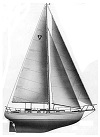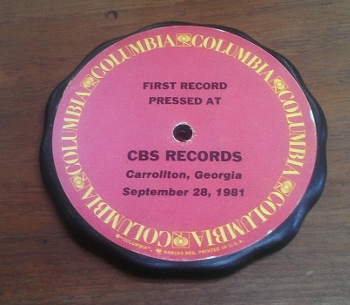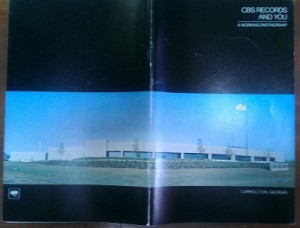

A Record Record Plant: CBS Records History
 In 1983 I had the honor of working in what was then the largest record plant in the world.
In 1983 I had the honor of working in what was then the largest record plant in the world.
The actual claim is that the CBS Records plant in Carrollton, GA was “the largest recorded-music manufacturing plant in the world.” This plant was awesome. We did everything – mastering, record pressing, printing, tape coating, injection molding, high-speed tape duplication, cassette assembly, packing, shipping, and record club fulfillment. (We also pressed video discs with injection-molded carriers, and no, I don’t want to talk about it. Yet.) Train cars of chemicals and vinyl pellets pulled up to what I was told were sixteen acres under one roof, although I haven’t verified that 700,000-square- ft estimate. People in the industry called us the Death Star.
Before the CBS record plant in Carrollton, GA was built four years before, Pittman, NJ and Terre Haute, IN were the two primary recorded music manufacturing sites for CBS. The Terre Haute plant produced its first records in December of 1957. Appropriately the first record pressed was “Christmas with Arthur Godfrey.” By 1979 the number of record presses in Terre Haute had increased from 20 to 186. Everything was done there, and it took 5000 people to do it. The Pitman plant began in 1960, employing 500 people. In 1978 Joe Kroll, our plant manager but at the time Pitman’s, estimated they produced 300,000 singles per day. The corporate plan moved everything to Georgia by 1983, so in 1983 5,000 people in Terre Haute lost their jobs. Pitman lost 500 jobs and ended up being shut down in 1986 for conversion to CD production. Carrollton ended up employing around 1400 people.
One reason the plant absorbed all the manufacturing was the implementation of production techniques and automation that allowed more to be produced with fewer people. Ideas flowed from the Stamford research teams to the Engineering teams at Milford, who invented production-line gadgets, to the in-house engineers that would shepard the changes into production. There was a little of everything; we had Engineers for plastics, chemicals, mechanical, injection molding, electronics, process, environment facility, and more.
The management infrastructure in Carrollton was built from experienced staff from Terre Haute and Pitman. They filled most positions from Directors through Supervisors. Factory workers came from rural Georgia and Alabama. It was the era of Thomas Wyman and Walter Yetnicoff. Plant readiness for Wyman’s first tour included waxing the floors until people could barely stand and painting every single door in the entire building. We always knew when New York management was visiting.
 By the end of 1983 the Carrollton plant was running three shifts. The first record had been pressed September 28, 1981, the billionth in 1990. The final CBS record was pressed in 1991, and then CBS Records became Sony. Sony apparently still warehouses and distributes from the location.
By the end of 1983 the Carrollton plant was running three shifts. The first record had been pressed September 28, 1981, the billionth in 1990. The final CBS record was pressed in 1991, and then CBS Records became Sony. Sony apparently still warehouses and distributes from the location.














Leave a Reply